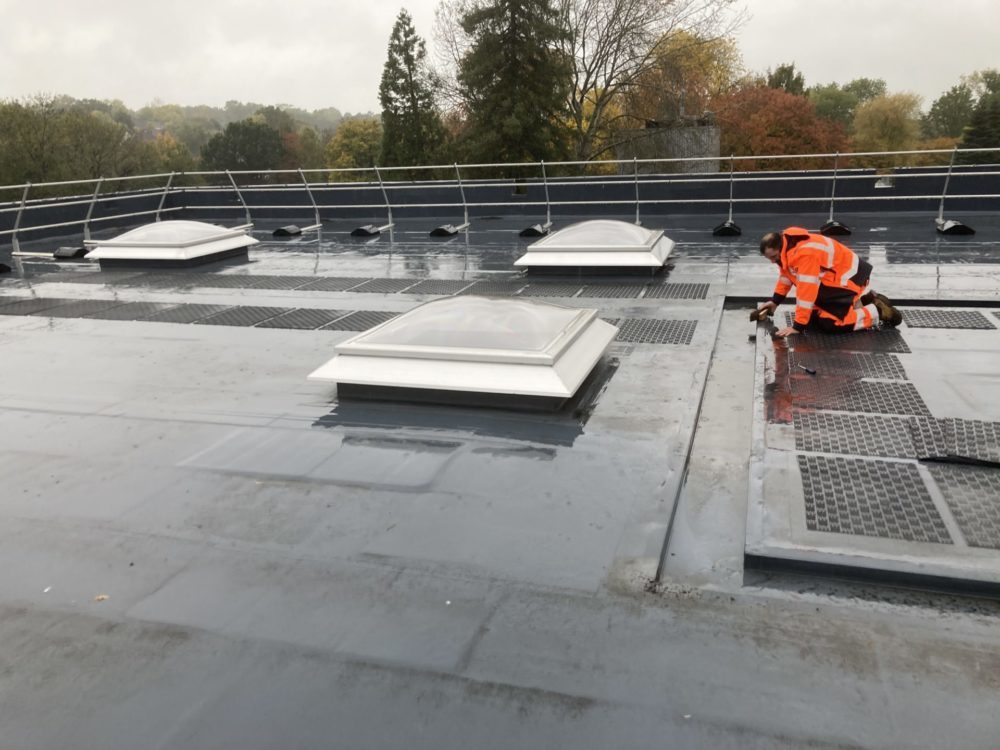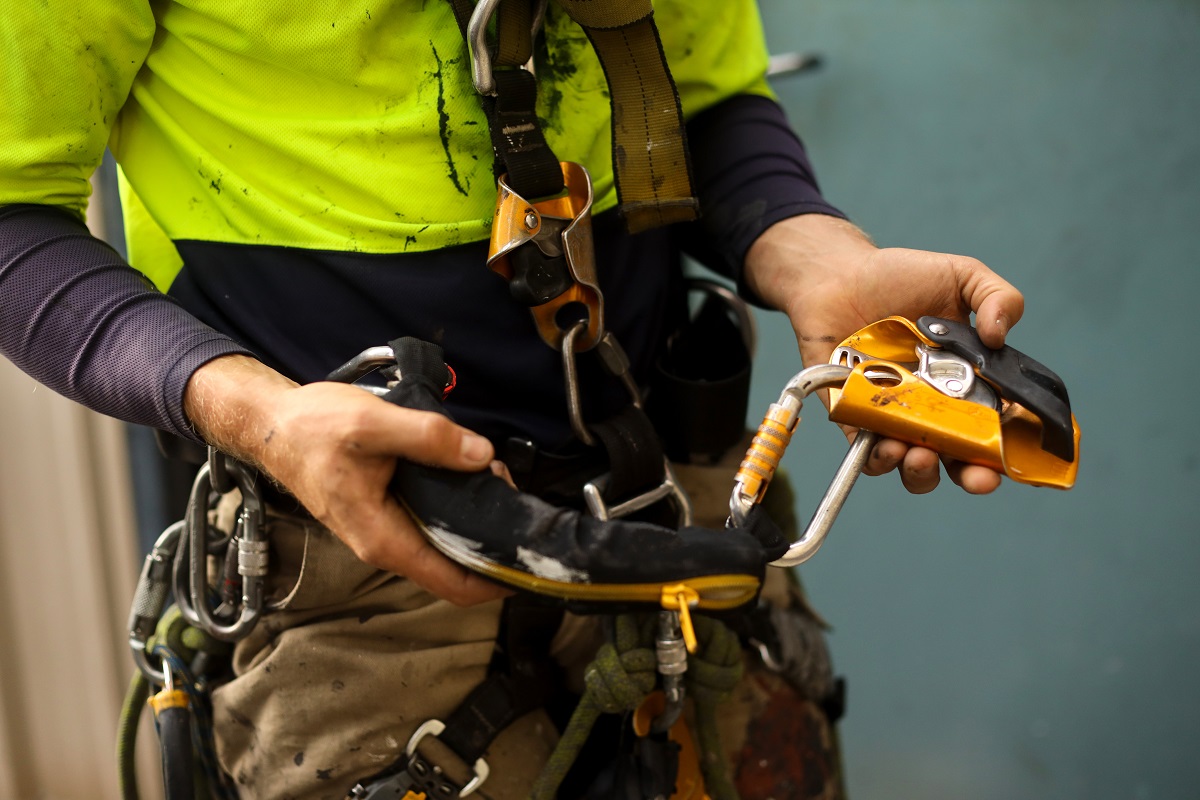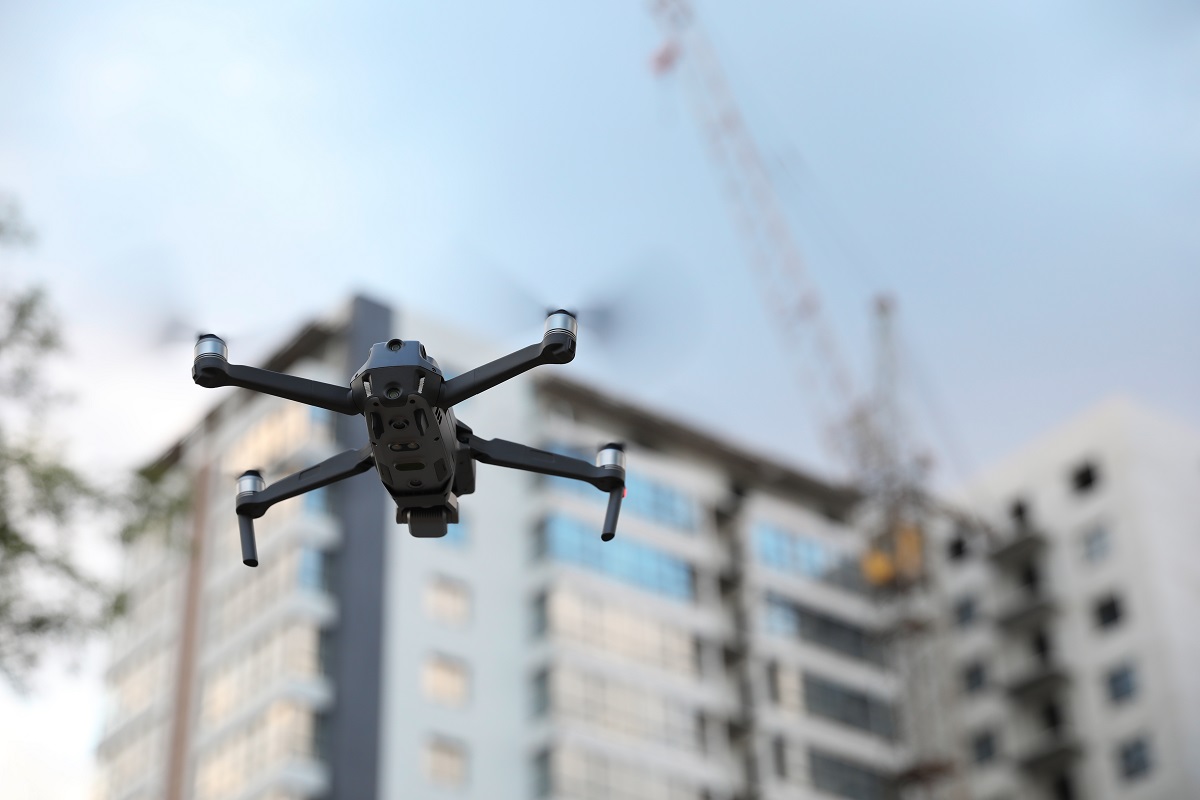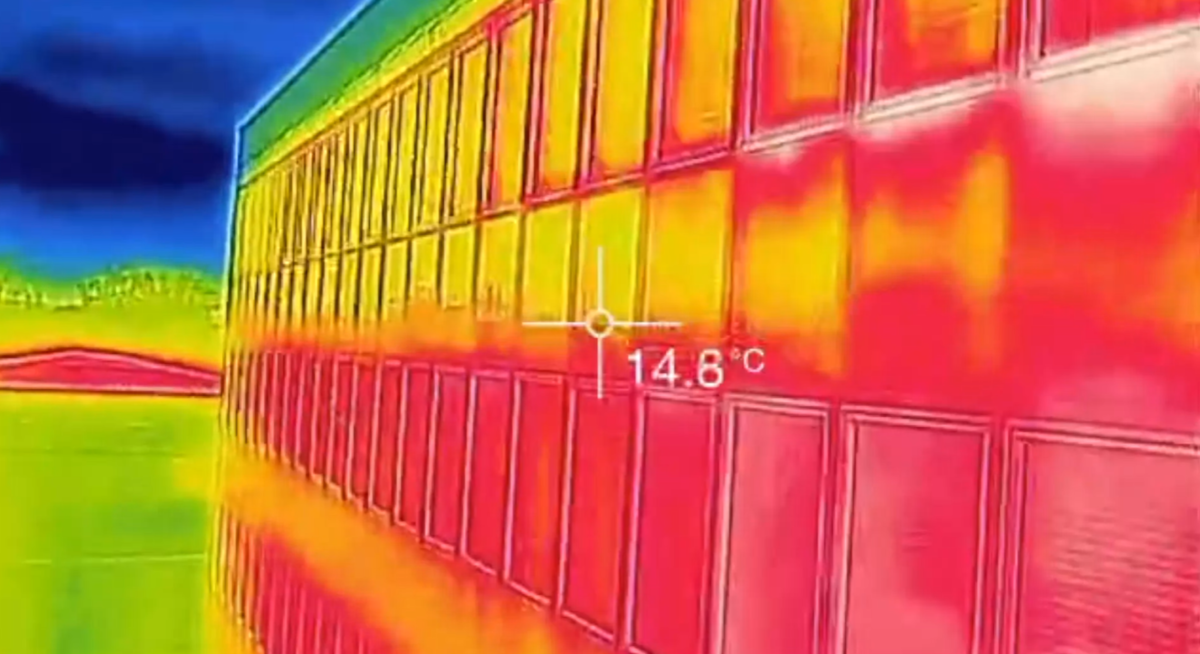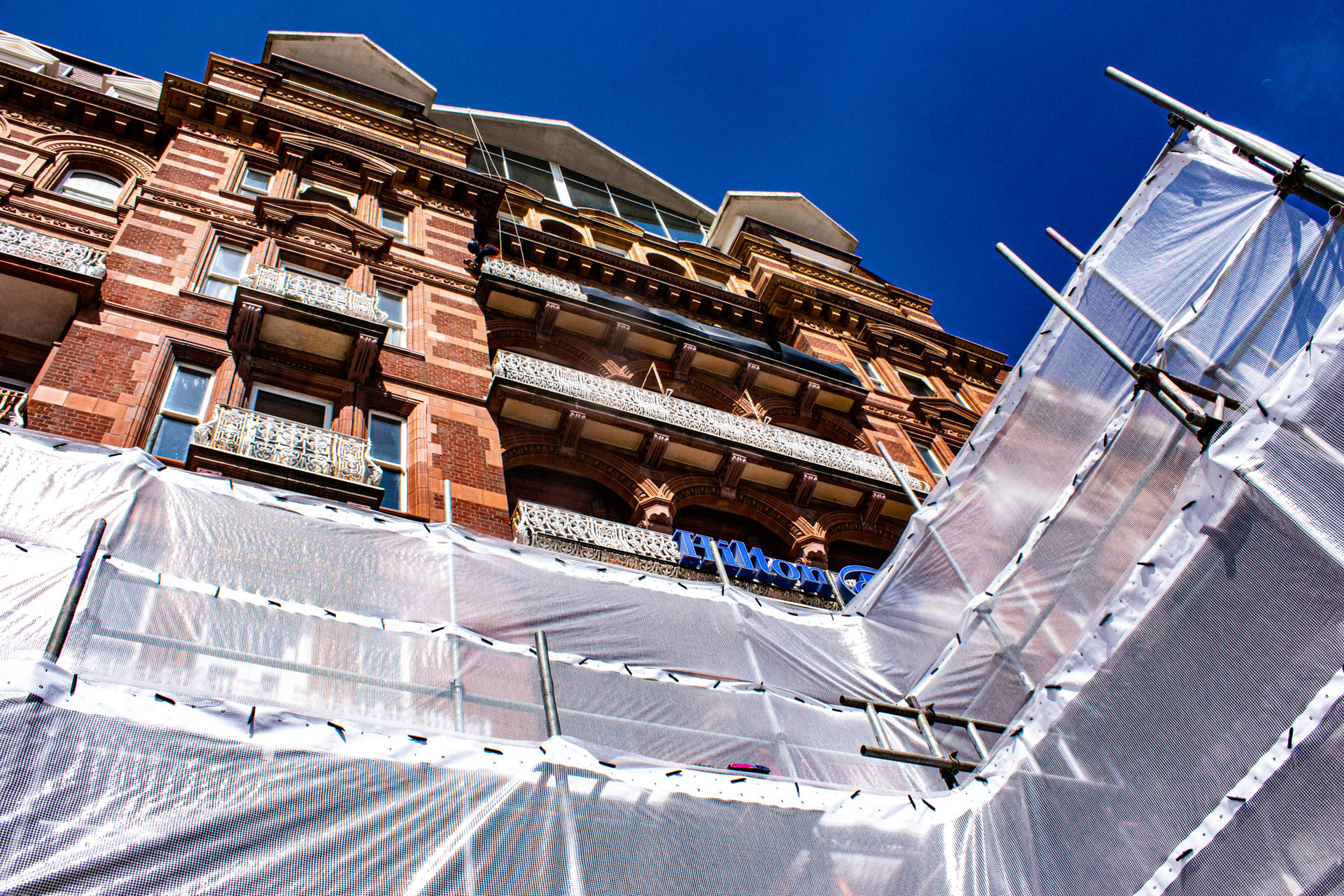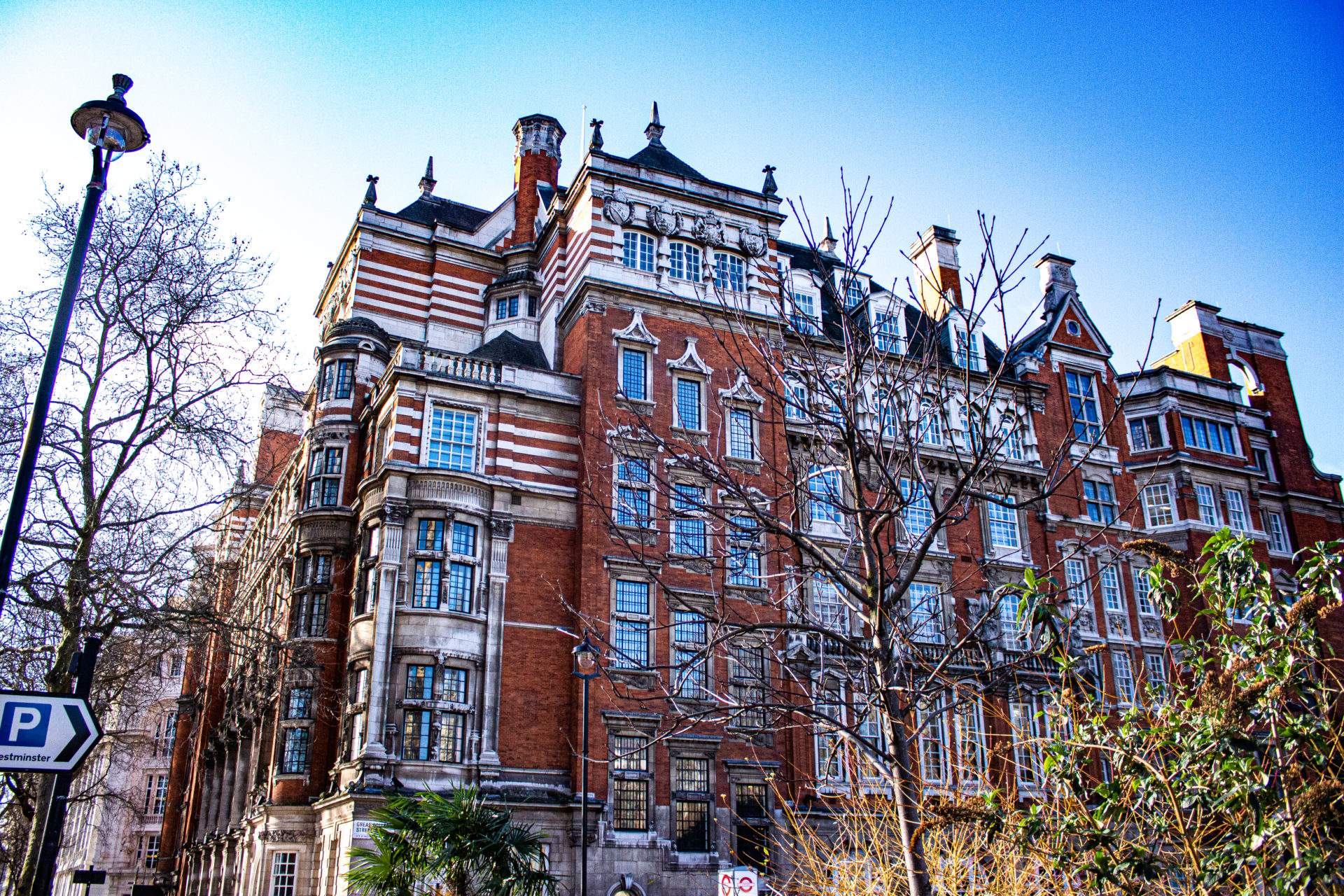Finding and fixing a roof leak in your commercial building before it has time to become bigger and cause catastrophic damage to your premises is essential, not just to your budget.
Yet, even when you spot a problem with a roof leak, it can be easy to overlook it and convince yourself you will deal with it when work is less busy. The dampness then spreads and starts affecting the internal aspects of your roof, such as rafters or woodwork. If there are wires nearby, you also risk the chance of the water causing them to short-circuit, and you could then be looking at the start of a fire. All because you didn’t check up on that suspected leak.
Even if there is no current sign of dampness or a leak on your commercial roofing, it still makes sense to take the precautions and have a professional come in and check it regularly, because water ingress spreads fast. This should be carried out at least twice a year for your peace of mind.
Signs that your commercial roof needs repair
Numerous external and internal indicators show that your roof isn’t weather-proof anymore. If it’s the latter, the damage has been done, and water is getting through. It must be fixed right away.
If the roof is damaged, it’s often easier to spot leak-related issues from the inside. Damp patches on the ceiling or high up the wall are a good indicator that water damage has already begun.
A leak is an obvious one, while the smell of dampness can usually be detected. However, it is not quite as easy to track this water back to its exact source.
Book a Commercial Roof Leak Detection Specialist
External signs of a leaking roof
- Missing and/or cracked slates – It’s not always easy to spot cracked or missing tiles or slates from the ground due to the height of a roof. Which is another reason why it’s important to have it regularly inspected. Broken or missing tiles or slates allow water to seep in and wet the internal features of the roof, causing dampness and leaks within a short period.
- Buckling felt roof shingles – if the roof shingles look higher in one place than the others due to the fact they are buckling, then there is probably a problem there. The shingles should be lying flat. The same could be if the edges are starting to curl up. It may be that they weren’t installed correctly in the first place, so it’s definitely worth investigating.
- Damaged flashing – The flashing around the chimney, roof joints and ventilation pipes can become loose, even torn, in high winds. Or it may be that it is rusting in some parts and causing holes. This is another indicator that a water leak may be imminent and needs to be repaired or replaced right away before more damage occurs.
- Moss on the roof – Clumps of green moss on your roof aren’t exactly aesthetically pleasing. But worse, if allowed to grow large enough, they can contain moisture, which can then seep into your roof. Once the roots of the moss flourish, they can lift tiles by burrowing under and loosening them. As you can imagine, if moss has been allowed to grow untreated for some time, not only will the damage it causes be substantially greater, but it can also prove much more costly, difficult, and time-consuming to remove.
Internal signs of a leaking roof
- Dripping water – this is, of course, the most obvious sign of a leaking roof. But it also means that the initial damage to your roof has been allowed to escalate to the extent that it needs to be repaired immediately – especially if the water is beginning to pool.
- Patches on the ceiling – another clear sign there is something wrong with the roof is damp patches on the ceiling. This is the kind of damage that can flare up quickly. It will appear as a slight mark initially but will soon develop into a peeling and bubbling of the paint and a sagging ceiling. If left, the eventual result can be expensive structural damage.
- Watermarks – These usually appear on the walls or insulation and is a clear indicator of water damage via dampness. If you touch the mark and it feels damp the leak is current developing.
- Musty smell – If you smell a musty scent, then it’ll probably be damp and/or mouldy. It’s usually a pretty obvious smell. If the mould is extensive enough, then those with respiratory or chest problems will know right away as they’ll probably start to feel uncomfortable and start wheezing or coughing. This can be particularly damaging if the building is heavily occupied, such as a hotel or a school.
What causes commercial roof leaks?
There are many possible causes of a leaking commercial roof. The most common are missing, broken, and poorly maintained or previously repaired materials.
Simple issues such as overhanging trees can also be a contributing factor, as can a build-up of leaves or moss. The former leads to damp patches, which can penetrate through the roof membrane.
Blocked gutters (caused by leaves and general debris) are another source of water build-up and dampness, as well as causing damage to the gutters and downpipes themselves.
Forgetting that your roof exists as a part of building maintenance is not a great idea. Like all parts of a building, it requires regular inspection and maintenance. Just because you don’t ‘see’ what’s happening up there, it doesn’t mean you don’t need to think about it.
Time and time again we have seen the consequences of businesses who do not carry out regular roof maintenance solutions. The old adage has never been truer when it comes to roof maintenance in particular – prevention is always better than cure.
Book your Roof Condition Survey
How are roof leaks detected?
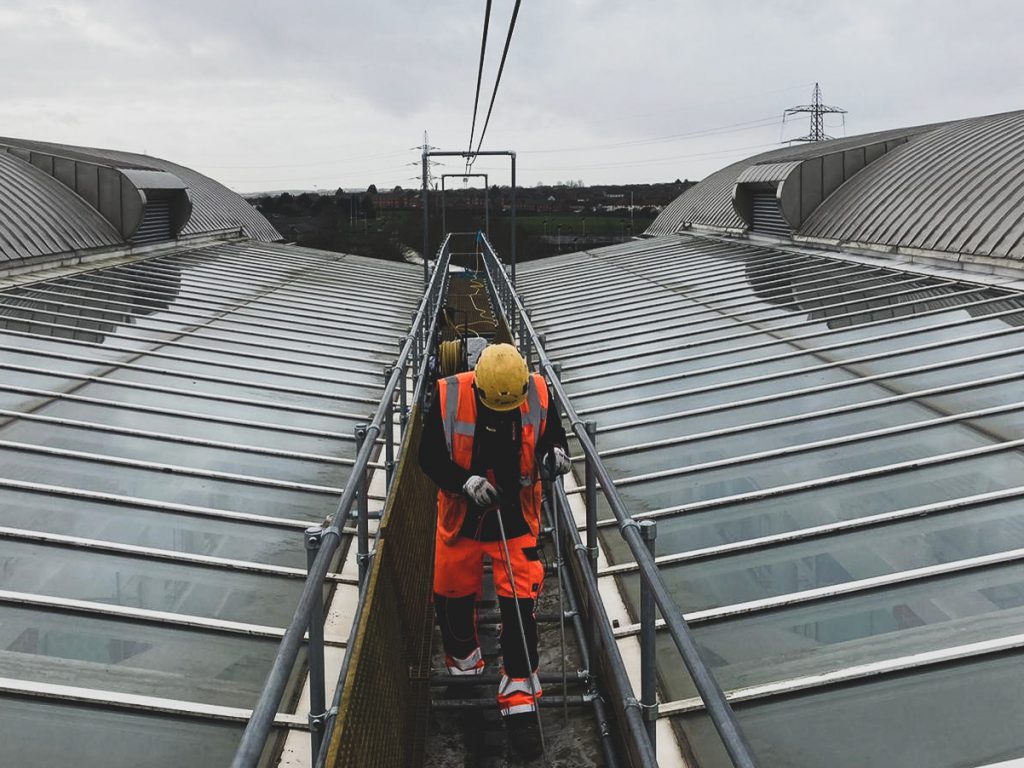
Most leaks are spotted via a close inspection of the roof area, both internally and externally. If you spot a damp patch then circling the area with a pen allows you to keep an eye on how quickly its spreading.
Wet Test
A wet test, or “Vector Mapping” is used to find defects in waterproof membranes and works on a similar principle to the dry test. The purpose of the wet test is to find defects in a waterproof membrane, but it only requires a conductive material to be present in the roof build-up and not directly below the waterproofing.
Dry Test
A dry test works by using the principle of electricity arcing or discharging from a brass brush head to a conductive surface below the waterproof membrane. Most membranes in common use today are non-conductive, although there are some exceptions to this, and this should be considered before deciding which test to use.
Flood Test
A flood test is a simple but effective way to check if the membrane is intact and has any defects. Once the outlets have been blocked and the roof filled with a limited amount of water, it is simply a case of waiting to see if a leak occurs below.
Dec Scanning
Dec scanning is used for the purposes of testing a roof that does not have a conductive element in it, or to detect moisture trapped below the surface. A deck scanner will perform where a wet or dry test will not work. Roof leak detection: What is Dec scanning?
Commercial roof repair and maintenance
The above can certainly help you locate and fix a problem with your commercial roof. Overall, though, it’s best to get a professional roof assessor to detect leaks in the area of roofing in question so that it doesn’t lead to any future problems. Roof maintenance is also best carried out by trained operatives using the correct access methods and appropriate safety equipment.
You can contact the team at Building Transformation for help with your commercial roof or any part of the fabric of your building.

